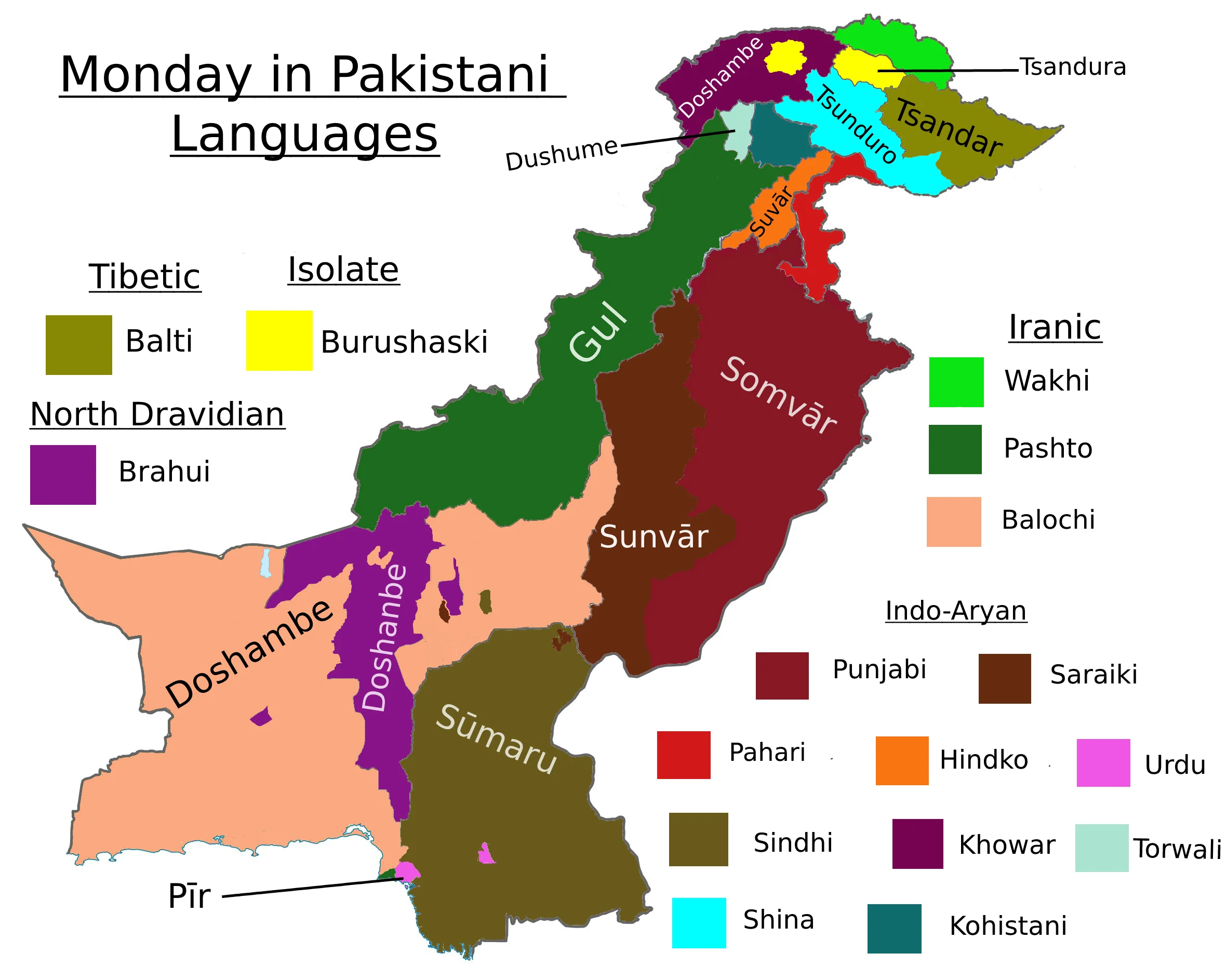Pakistan Map: A Comprehensive Guide

Introduction
Maps are indispensable tools that help us understand and navigate the world around us. They provide valuable insights into geographical, political, and cultural aspects of regions. This comprehensive guide focuses on the map of Pakistan, offering an in-depth look at its various features and significance. Pakistan Map: A Comprehensive Guide.
Understanding the Pakistan Map
Political Boundaries
The political boundaries of Pakistan define its territorial limits and are crucial for understanding its governance and administrative structure. Pakistan shares its borders with India, Afghanistan, Iran, and China, each of which influences its geopolitical landscape.
Physical Features
Pakistan boasts diverse physical features, from towering mountains to expansive plains and deserts. The northern regions are dominated by the Himalayas and the Karakoram Range, while the southern part features fertile plains and coastal areas.
Administrative Divisions
Pakistan is divided into several administrative units, including provinces, territories, and federally administered areas. Understanding these divisions is essential for comprehending the country’s political and administrative setup.
Historical Context of the Pakistan Map
Ancient Maps
The history of mapping in the region now known as Pakistan dates back to ancient civilizations such as the Indus Valley Civilization. Early maps provide insights into the geographical understanding of ancient societies.
Colonial Influence
During the British colonial era, significant efforts were made to map the subcontinent. These maps laid the foundation for modern cartography in Pakistan.
Post-Independence Changes
Following Pakistan’s independence in 1947, the country’s map underwent significant changes to reflect new political boundaries and administrative divisions.
Geographical Features
Mountains and Hills
Pakistan is home to some of the world’s highest peaks, including K2, the second-highest mountain globally. The mountainous regions in the north are not only natural wonders but also hold strategic importance.
Rivers and Lakes
The Indus River, one of the longest rivers in the world, flows through Pakistan, providing vital water resources for agriculture and livelihoods. Pakistan also has numerous lakes, both natural and man-made.
Deserts and Plains
The Thar Desert in Sindh and the Cholistan Desert in Punjab are notable desert regions in Pakistan. In contrast, the Punjab and Sindh plains are fertile areas supporting extensive agricultural activities.
Political Boundaries and Neighboring Countries
India
Pakistan shares a long and often contentious border with India, marked by historical conflicts and ongoing disputes over regions like Kashmir.
Afghanistan
The western border with Afghanistan is known as the Durand Line, a region with significant cultural and historical ties but also a source of security concerns.
Iran
To the southwest, Pakistan shares a border with Iran, fostering trade and cultural exchanges between the two nations.
China
The northern border with China is marked by the Karakoram Pass, a key trade route and strategic point for both countries.
Provincial Breakdown
Punjab
Punjab, the most populous province, is known for its fertile land and significant cultural heritage.
Sindh
Sindh is home to Karachi, Pakistan’s largest city and economic hub, as well as the historic Indus Valley Civilization sites.
Khyber Pakhtunkhwa
This province is characterized by its rugged terrain and rich cultural history, including the historic Khyber Pass.
Balochistan
Balochistan, the largest province by area, is rich in natural resources but sparsely populated.
Gilgit-Baltistan
Known for its breathtaking landscapes and high-altitude terrain, Gilgit-Baltistan is a key region for tourism and strategic interests.
Azad Jammu & Kashmir
This region, administered by Pakistan, is part of the larger Kashmir conflict and is known for its scenic beauty.

Major Cities on the Pakistan Map
Islamabad
The capital city, Islamabad, is known for its modern infrastructure, green spaces, and political significance.
Karachi
Karachi, the largest city and financial hub, is a bustling metropolis with a vibrant economy and diverse population.
Lahore
Lahore, the cultural heart of Pakistan, is famous for its historical landmarks and rich traditions.
Peshawar
Peshawar, one of the oldest cities in Pakistan, has a rich history and serves as a gateway to the Khyber Pass.
Quetta
Quetta, the capital of Balochistan, is known for its unique culture and proximity to Afghanistan.
Transportation Networks
Road Networks
Pakistan has an extensive network of highways and roads connecting major cities and regions, facilitating trade and travel.
Railways
The railway system in Pakistan plays a crucial role in transportation, connecting various parts of the country.
Airports
Major airports in cities like Karachi, Islamabad, and Lahore serve as international gateways and domestic travel hubs.
Ports
Pakistan’s ports, including the Karachi Port and Gwadar Port, are vital for international trade and economic activities.
Cultural and Historical Sites
UNESCO World Heritage Sites
Pakistan is home to several UNESCO World Heritage Sites, including the archaeological ruins of Mohenjo-Daro and the historic Lahore Fort.
National Monuments
National monuments like the Minar-e-Pakistan and Pakistan Monument commemorate important events in the country’s history.
Archaeological Sites
Sites such as Taxila and Harappa offer glimpses into ancient civilizations that once thrived in the region.
Economic Zones and Industrial Areas
Special Economic Zones (SEZs)
SEZs are designated areas aimed at boosting economic growth through incentives for businesses and investors.
Industrial Hubs
Cities like Karachi, Faisalabad, and Sialkot are known for their industrial output, contributing significantly to Pakistan’s economy.
Trade Routes
Pakistan’s strategic location makes it a key player in regional trade routes, including the China-Pakistan Economic Corridor (CPEC).
Climate Zones on the Pakistan Map
Northern Mountainous Regions
The northern regions experience cold winters and moderate summers, with heavy snowfall in higher altitudes.
Central Plains
The central plains have a continental climate with hot summers and cool winters, supporting extensive agriculture.
Coastal Areas
Coastal areas like Karachi experience a maritime climate with milder temperatures and higher humidity.
Desert Regions
Desert regions have extreme temperatures with scorching summers and cold winters, making them challenging for habitation.
Biodiversity and Natural Resources
National Parks and Wildlife Sanctuaries
Pakistan has numerous national parks and wildlife sanctuaries that protect its diverse flora and fauna.
Forests
Forests in regions like the Himalayas and Hindukush are vital for environmental conservation and biodiversity.
Mineral Resources
Pakistan is rich in mineral resources, including coal, natural gas, and precious stones, contributing to its economic growth.
Agricultural Zones
The fertile plains of Punjab and Sindh are crucial agricultural zones producing crops like wheat, rice, and cotton.
Demographic Distribution
Population Density
Pakistan’s population density varies widely, with urban areas like Karachi and Lahore being densely populated.
Urban vs Rural Areas
The population is divided between urban centers with modern amenities and rural areas with traditional lifestyles.
Ethnic and Linguistic Groups
Pakistan is a diverse country with multiple ethnic and linguistic groups, including Punjabis, Sindhis, Pashtuns, and Baloch.
Water Resources and Management
Major Rivers
The Indus River and its tributaries are vital for Pakistan’s water supply, supporting agriculture and livelihoods.
Dams and Reservoirs
Dams like Tarbela and Mangla are crucial for water storage, flood control, and hydroelectric power generation.
Irrigation Systems
Extensive irrigation systems support agriculture, particularly in the fertile plains of Punjab and Sindh.
Military and Strategic Importance
Border Security
Pakistan’s borders, particularly with India and Afghanistan, are areas of significant military focus and security concerns.
Strategic Locations
Key locations like the Gwadar Port and the Karakoram Pass hold strategic military and economic importance.
Military Installations
Pakistan has numerous military bases and installations, reflecting its strategic defense needs.
Tourism and Travel
Tourist Attractions
Tourist attractions include the scenic valleys of Swat and Hunza, historical sites in Lahore, and the coastal city of Karachi.
Travel Routes
Well-developed travel routes connect major tourist destinations, facilitating domestic and international tourism.
Safety and Accessibility
Safety and accessibility are crucial for promoting tourism, with efforts being made to improve infrastructure and security.
Technological Integration in Mapping
Digital Maps
Digital maps and navigation tools have revolutionized how people navigate and explore Pakistan.
GIS and Remote Sensing
Geographic Information Systems (GIS) and remote sensing technologies are used for planning, disaster management, and resource allocation.
Applications in Planning and Development
Advanced mapping technologies aid in urban planning, infrastructure development, and environmental conservation.
Challenges in Mapping Pakistan
Border Disputes
Ongoing border disputes with neighboring countries pose challenges for accurate and uncontested mapping. Pakistan Map: A Comprehensive Guide.
Terrain and Accessibility
The diverse and often rugged terrain makes mapping difficult, requiring advanced technologies and methods.
Technological Limitations
Despite advancements, technological limitations and resource constraints affect the quality and accuracy of maps.
Future of Mapping in Pakistan
Innovations in Cartography
Innovations in cartography promise more accurate and detailed maps, benefiting various sectors.
Government Initiatives
Government initiatives aim to improve mapping infrastructure and integrate modern technologies for better planning and development.
Potential Developments
Potential developments include enhanced digital mapping services, greater accessibility of maps, and improved geographical education.
FAQs Pakistan Map: A Comprehensive Guide.
What are the major geographical features of Pakistan?
Pakistan’s major geographical features include the Himalayas and Karakoram mountain ranges, the Indus River, the Thar Desert, and fertile plains in Punjab and Sindh.
How many provinces does Pakistan have?
Pakistan has four provinces: Punjab, Sindh, Khyber Pakhtunkhwa, and Balochistan. Additionally, it has two autonomous territories: Gilgit-Baltistan and Azad Jammu & Kashmir.
Which is the largest city in Pakistan?
Karachi is the largest city in Pakistan, known for its economic significance and diverse population.
What are the key transportation networks in Pakistan?
Pakistan’s key transportation networks include an extensive road and railway system, major airports in cities like Karachi and Islamabad, and ports such as Karachi Port and Gwadar Port.
What are the main economic activities in Pakistan?
The main economic activities in Pakistan include agriculture, manufacturing, trade, and services. Key sectors are textiles, agriculture, and mining.
How has technology impacted mapping in Pakistan?
Technology has greatly impacted mapping in Pakistan, with advancements in digital maps, GIS, and remote sensing improving accuracy and accessibility for various applications.
Conclusion
Maps are invaluable tools for understanding the geographical, political, and cultural landscapes of a country. The Pakistan map, with its rich history, diverse features, and strategic importance, provides insights into the nation’s identity and development. Accurate and detailed maps are essential for planning, governance, and sustainable development, making the future of mapping in Pakistan an exciting and vital field. Pakistan Map: A Comprehensive Guide.





